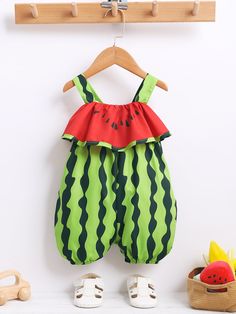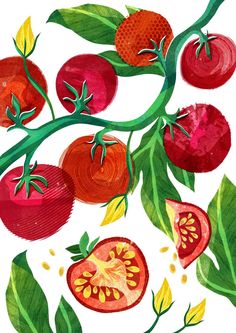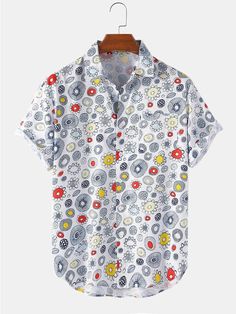Vegetable Impression 04
Vegetable printing is an innovative technique that utilizes the natural beauty of fruits and vegetables to create stunning designs on fabrics. As the fashion industry increasingly shifts towards sustainability and eco-friendly practices, vegetable printing has emerged as a popular method for designers and artisans seeking to reduce their environmental footprint. This article explores the history, techniques, benefits, and applications of vegetable printing in fashion, highlighting its significance in today’s eco-conscious landscape.
Traditional Roots
The use of plant-based materials for dyeing and printing has a rich history that dates back centuries. Ancient civilizations, including the Egyptians, Indians, and Chinese, utilized natural dyes derived from plants, fruits, and vegetables to create textiles. These techniques were not only practical but also reflected cultural beliefs and traditions.

In India, for instance, block printing with natural dyes has been practiced for generations, with artisans using materials like turmeric, indigo, and madder root to create vibrant textiles. The art of vegetable printing has roots in these traditional practices, emphasizing both craftsmanship and a connection to the earth.
Modern Revival
The modern fashion industry has seen a resurgence in interest in vegetable printing as part of a broader movement towards sustainable fashion. With growing awareness of the environmental impact of fast fashion, many designers are looking for innovative ways to create beautiful, eco-friendly garments. Vegetable printing offers a creative solution that not only produces unique patterns but also emphasizes a commitment to sustainability.
Selecting Materials
The first step in vegetable printing involves choosing the right vegetables and plants. Each vegetable offers distinct shapes, textures, and colors that can produce unique designs. Popular choices include:
- Potatoes: Often halved or carved into specific shapes, potatoes create bold and clear impressions.
- Carrots: Sliced into rounds or carved, carrots yield intricate patterns and textures.
- Leafy Greens: Plants like kale or ferns can create delicate, organic prints.
- Fruits: Citrus fruits, such as oranges and lemons, can add vibrant colors and interesting textures.
Preparation Process
- Cutting and Preparing: The selected vegetables are cut to expose their inner texture and patterns. This step is crucial as it influences the final design. For instance, potatoes can be carved into various shapes, while leafy greens might be used whole.
- Inking: Natural dyes or fabric paints are applied to the vegetable surfaces. Water-based paints are ideal for fabrics, as they are non-toxic and environmentally friendly. Additionally, the choice of ink can affect the vibrancy and longevity of the prints.
- Printing: The inked vegetable is pressed onto the fabric, transferring its pattern. Even pressure is essential for a clear impression, ensuring that the design is crisp and well-defined.
- Setting the Design: Once printed, the fabric may need to be heat-set to ensure the colors remain vibrant and do not wash out. This process can involve steaming or ironing, depending on the materials used.
Creative Techniques
Designers often experiment with layering and color mixing to achieve more complex designs. By overlapping different vegetable prints or using various colors, they can create dynamic, visually appealing patterns that stand out. Techniques such as resist printing, where certain areas are masked off, can also be employed to create intricate designs.
Benefits of Vegetable Printing in Fashion
Sustainability

One of the primary advantages of vegetable printing is its sustainability. Unlike synthetic dyes, which can be harmful to the environment, vegetable dyes are biodegradable and non-toxic. This aligns with the growing demand for eco-friendly practices in fashion, allowing designers to produce garments that are both beautiful and environmentally responsible.
Unique Aesthetic
Each vegetable print is inherently unique due to the natural variability of the materials used. This uniqueness adds value to the garments, as consumers are increasingly seeking one-of-a-kind pieces that tell a story. Vegetable printing offers a way to create distinctive designs that cannot be replicated, enhancing the appeal of handcrafted fashion items.
Supporting Local Artisans
The revival of vegetable printing often involves collaboration with local artisans and craftsmen. This not only supports traditional skills but also promotes fair trade and ethical practices in the fashion industry. By engaging with local communities, designers can create meaningful partnerships that celebrate cultural heritage while fostering economic sustainability.
Educating Consumers
As consumers become more conscious of their purchasing decisions, vegetable printing serves as a powerful educational tool. It highlights the importance of sustainable practices in fashion and encourages consumers to consider the environmental impact of their choices. By promoting transparency in the production process, brands can cultivate a more informed and engaged customer base.
Applications in Fashion
Clothing
Vegetable printing can be applied to a wide range of clothing items, from casual wear to high-fashion pieces. Designers often incorporate vegetable prints into dresses, tops, scarves, and accessories, creating eye-catching garments that reflect a commitment to sustainability. For example, a flowing dress adorned with floral potato prints can evoke a sense of nature and artistry, appealing to eco-conscious consumers.
Home Textiles
In addition to fashion, vegetable printing is gaining traction in home textiles. Items such as tablecloths, cushion covers, and wall hangings can feature beautiful vegetable prints, adding a natural touch to interior design. This crossover between fashion and home decor emphasizes the versatility of vegetable printing, allowing consumers to integrate sustainable practices into their living spaces.
Collaborations and Collections

Many fashion brands are beginning to experiment with vegetable printing, often collaborating with artists and designers who specialize in this technique. These partnerships can lead to unique collections that showcase the beauty of natural materials while promoting sustainable practices. Notable collaborations have resulted in limited-edition garments that highlight the artistry involved in vegetable printing.
Events and Workshops
Workshops centered around vegetable printing have become popular in community art centers and fashion schools. These events provide hands-on experiences for participants to learn the technique, encouraging creativity and collaboration. By engaging individuals in the process, these workshops foster a deeper appreciation for sustainable practices in fashion.
Case Studies in Vegetable Printing
High-Profile Designers
Several high-profile designers have embraced vegetable printing as part of their collections. For instance, brands like Stella McCartney have incorporated eco-friendly materials and methods into their lines, showcasing vegetable prints that align with their sustainability ethos. By doing so, they set a precedent for other designers to follow.
Artisan Collaborations
Many small brands are partnering with local artisans to produce vegetable-printed textiles. These collaborations not only promote traditional crafting techniques but also provide artisans with a platform to share their skills and stories. By combining contemporary design with traditional practices, these brands create products that resonate with consumers seeking authenticity.
Challenges in Vegetable Printing
Limitations of Materials
While vegetable printing offers many advantages, it also comes with certain limitations. The availability of specific vegetables and the variability in color and texture can pose challenges for consistent production. Designers must often adapt their techniques to work with the unique characteristics of each batch of materials.
Longevity of Prints
Another challenge is the longevity of vegetable prints. While natural dyes can produce vibrant colors, they may not be as colorfast as synthetic alternatives. Designers must find ways to ensure that their vegetable prints withstand washing and wear, which may involve additional treatment processes.
The Future of Vegetable Printing in Fashion
Growing Demand for Sustainability
As consumers become increasingly aware of environmental issues, the demand for sustainable fashion practices is expected to rise. Vegetable printing is likely to play a significant role in this shift, offering designers an opportunity to align their products with consumer values.
Technological Innovations
Advancements in technology may also enhance the vegetable printing process. Innovations in dye extraction, printing techniques, and fabric treatments could lead to more efficient and effective methods for incorporating vegetable prints into fashion.
Expanding Education and Awareness
Educational initiatives focused on sustainable practices in fashion can further promote the use of vegetable printing. By engaging future designers in the techniques and principles behind vegetable printing, the fashion industry can cultivate a new generation of eco-conscious creators.
Conclusion

Vegetable printing represents a harmonious blend of art, nature, and sustainability in the fashion industry. As the demand for eco-friendly practices grows, this innovative technique offers a creative solution that produces beautiful designs while promoting environmental consciousness. By embracing vegetable printing, designers can create unique garments that reflect their commitment to sustainability while supporting local artisans and educating consumers.
In a world increasingly aware of the environmental impact of fashion, vegetable printing stands out as a compelling choice for those seeking to combine beauty with responsibility. This artistic approach not only enriches the fashion landscape but also paves the way for a more sustainable future, where creativity and environmental stewardship go hand in hand. As this trend continues to evolve, vegetable printing is poised to make a lasting impact on the fashion industry and beyond, inspiring both creators and consumers to embrace a more sustainable and artistic vision of fashion. Through the integration of vegetable printing, we can redefine the relationship between fashion and nature, paving the way for a future where style and sustainability coexist harmoniously.
